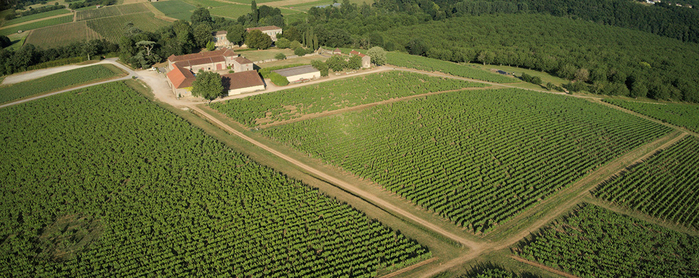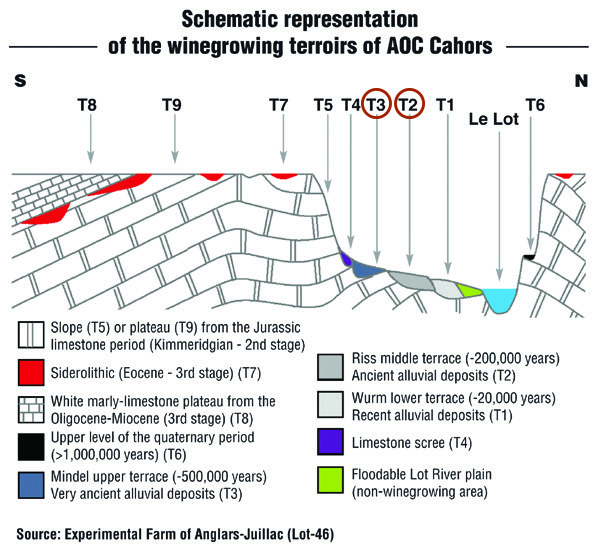Château Les Bouysses is an ancient priory rich of 800 years of history. It was bought by the Marre Family in 1933. “Bouysses" is the old French word for “buis” – the boxwood that borders the alleys of the property. The 30 hectare-estate is located in the town of Mercues nearby Cahors in the Southwest of France. It is planted with 24 hectares of vines and 6 hectares of walnut trees.

The soils are located for 50% on middle terrace (*T2) and 50% on upper terrace (*T3).
T2: ancient alluvial deposits - siliceous, sandy and gravelly soil less altered than T3
T3: very ancient alluvial deposits - siliceous and gravelly soil

HISTORY
A thirteenth century royal decree requesting lords to donate some land to allow the establishment of religious communities and monasteries was at the origin of ‘Les Bouysses’, in 1230. The lord of Rassiels (a place situated above Douelle), Raymond de Lard, therefore ceded land called “Les Bouysses” to Dame Guillemette, the second abbess of Leyme, for the establishment of a cistercian priory. A small number of nuns lived there, perhaps a dozen or thereabouts.
During the Hundred Year- War the nuns were forced to leave by the English. Subsequently the nuns returned until year 1600, from which date they remained at Leyme but kept their eyes on events at the Bouysses priory. In 1745 they authorized the demolition of their chapel which was remplaced by a winery on the same site. Henceforth the wine was located at ‘Les Bouysses’ and the prayers at Leyme.
In 1789 property belonging to the Church became property of the French state and in 1791 the estate was sold to François Agar, who was mayor of Mercuès and wine merchant in Mercuès and Paris-Bercy. A fire at the Bercy warehouse caused his bankruptcy and he was obliged to sell the estate to one of his cousins Count Michel Agar de Mosbourg. The latter built most of the existing buildings with the exception of the winery and one of the cellars. The elegant perron with double flight of stairs outside copy italian designs that he had loved during his trips to Italy. The Orangery was built in 1820. The stables were built nearby following a request by Napoleon Bonaparte who was to have visited with his guard and horses. He never made the journey.
Count Michel Agar de Mosbourg did have one son who had no sons or daughters. It was therefore the nephews of the latter, the Vicomtes de Rougé, who became owners at the end of the nineteenth century. The last viscount, inventor of aircraft tailplanes, sold some land to finance his research. As his invention was stolen before he was able to patent it, and consequently lost the fees he should have received, he was obliged to sell off the rest of the estate.
The Marre family became owners in 1933. Until relatively recently it was a purely agricultural enterprise but it was decided to rehabilitate the main building called the ‘Château’.